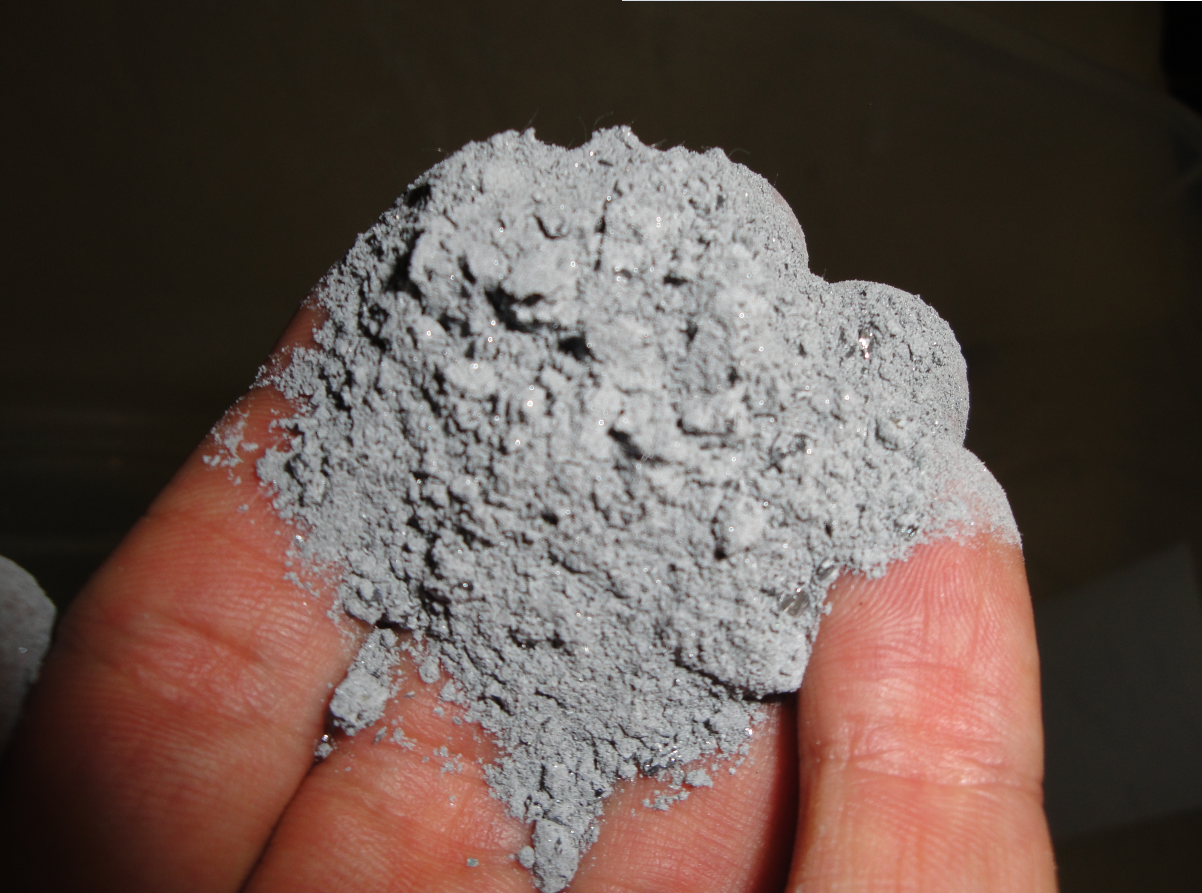
 |
SiC refractory concrete used to make the slumping mold. |
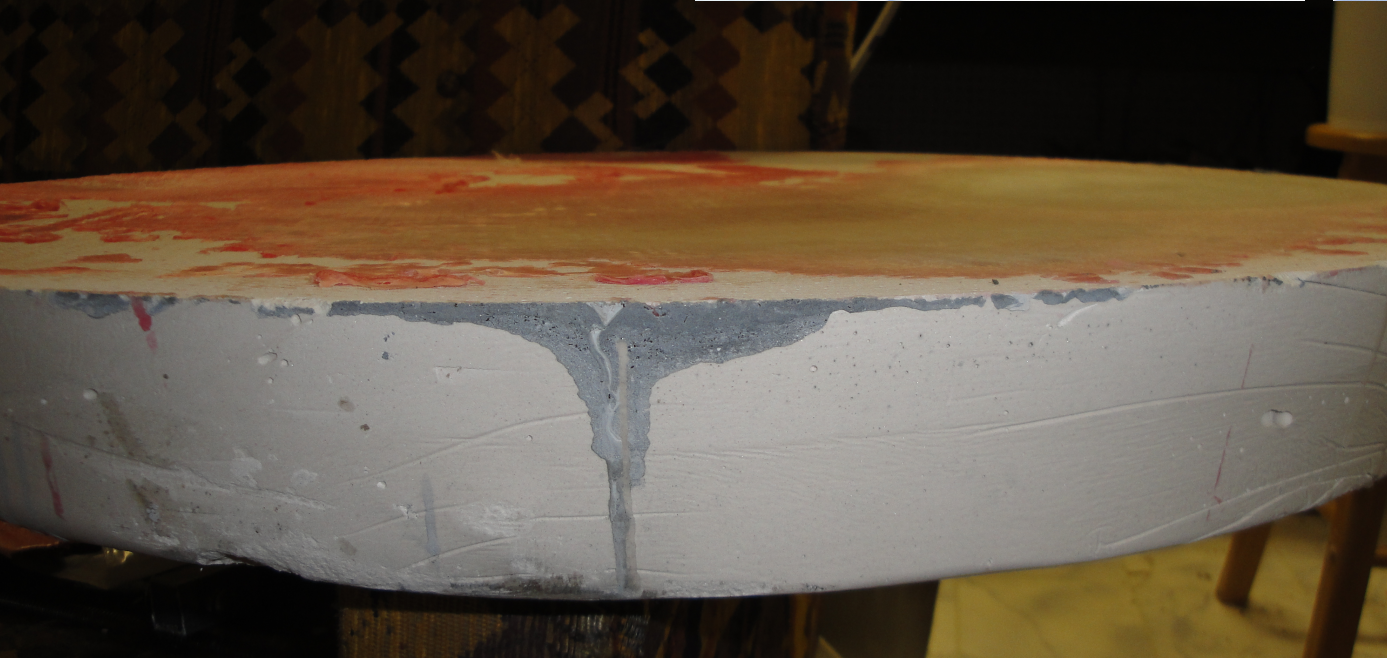 |
Plaster blank after the SiC mold has been separated from the plaster (side view). |
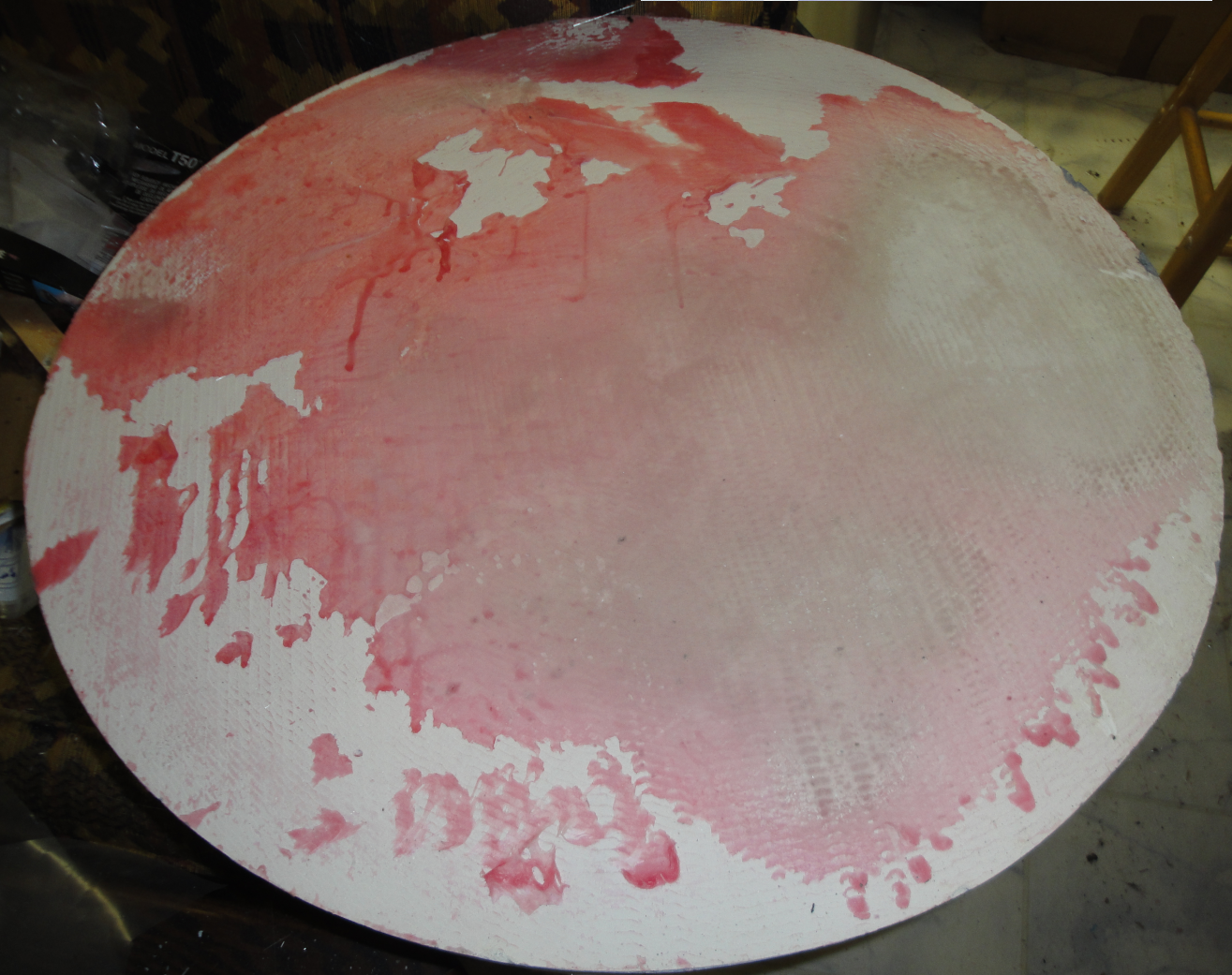 |
Plaster blank after the SiC mold has been separated from the plaster (front view). The red melted wax can be seen on top of the blank. |
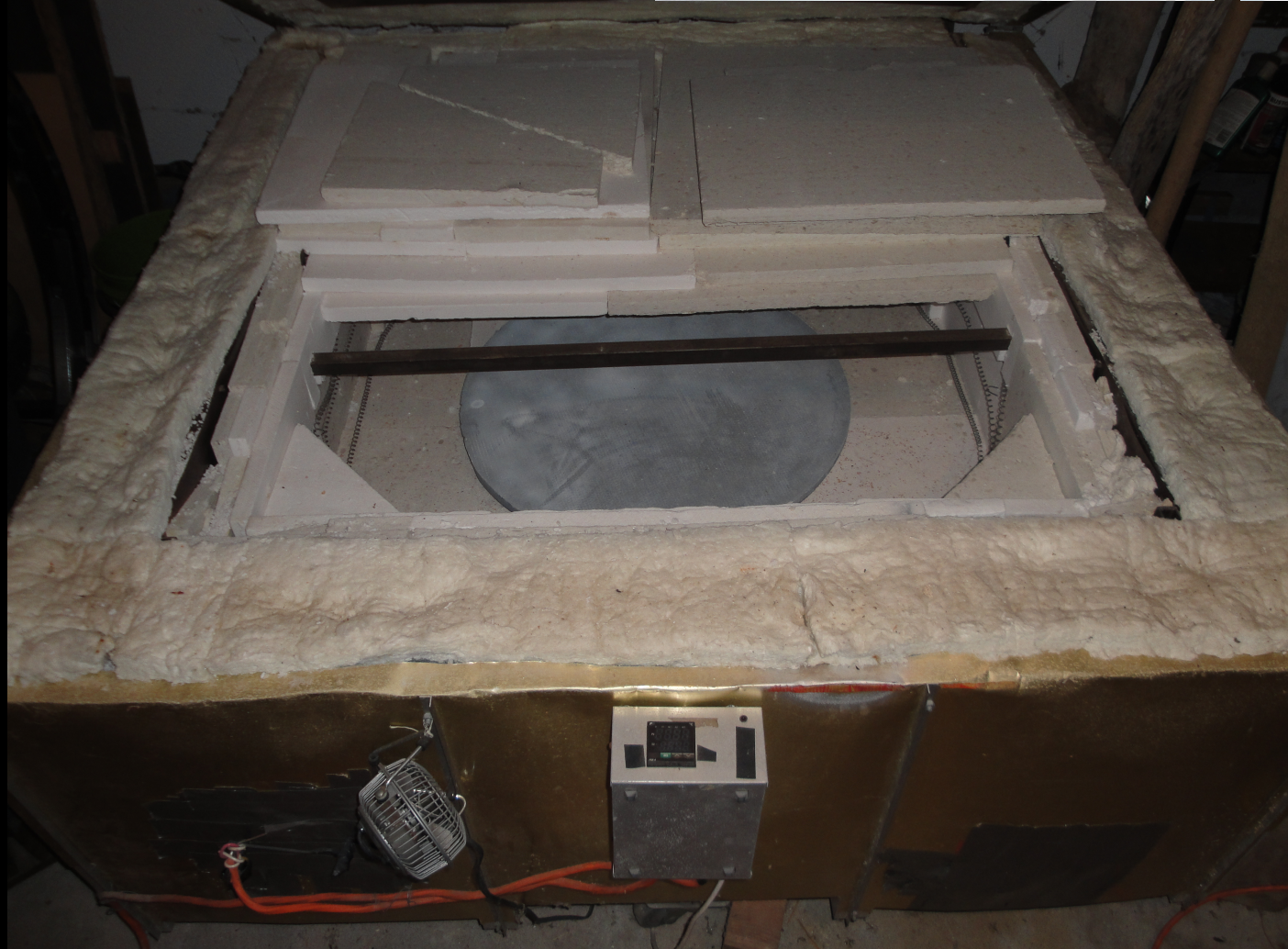 |
SiC slumping mold inside the oven (wide view). |
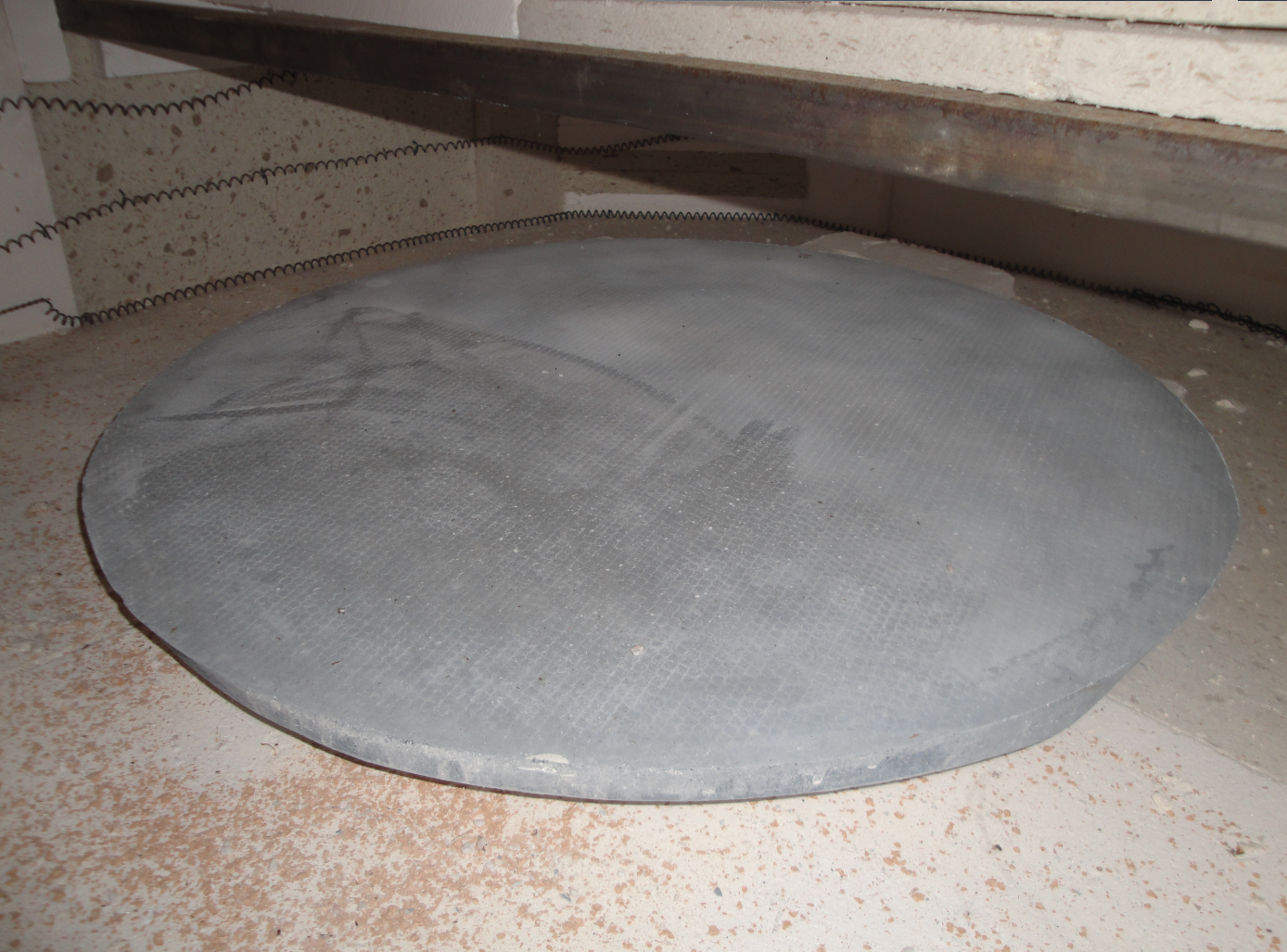 |
SiC slumping mold inside the oven. |
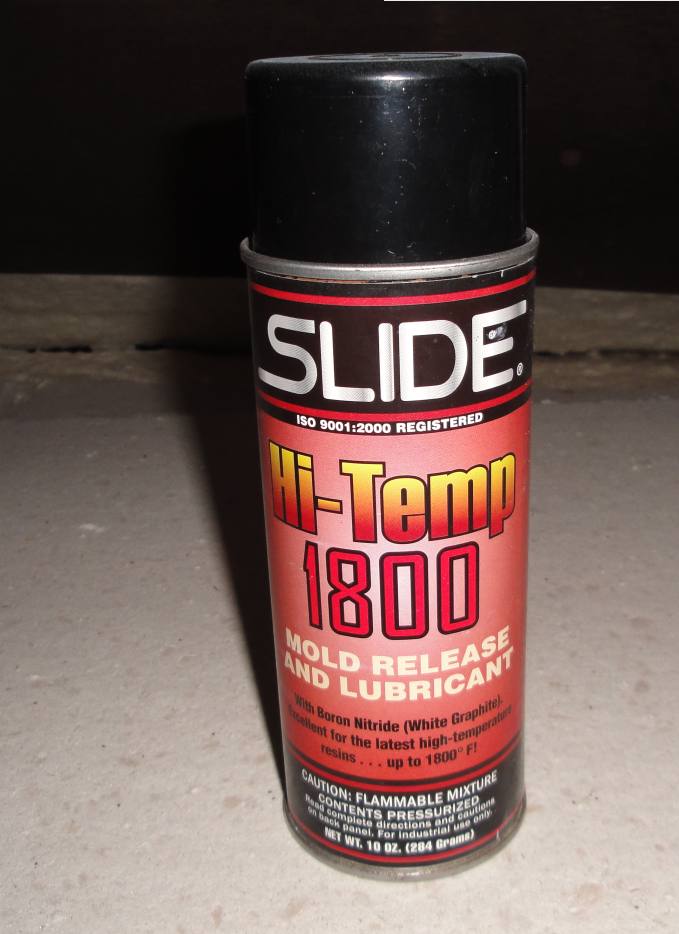 |
Boron Nitride is sprayed on the mold to avoid having the glass stick to the mold. |